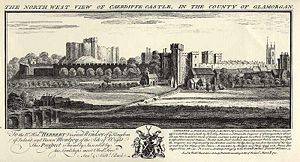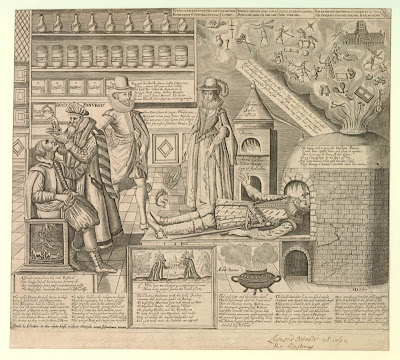I am very pleased to be involved in the Exeter project. As retirement approached, I was faced with the problem of what to do with over 22,000 cards of biographical information on medical practitioners of all sorts which I have been accumulating since the 1970s (aka the Biographical Index). I very much wanted this information to be generally available, but it seemed most likely that the cards would end up on a skip. Cards, 6 inches by 4 inches, are of course an antique technology and the chances of being able to convert them into an online resource seemed remote.
The Exeter project has changed all that. Work has already begun, with the help of Dr Frances White, on entering biographical data extracted years ago from the records of the Barber-Surgeons’ Company of London. This will be followed by the more varied data collected for London and East Anglia, especially Norfolk, Suffolk, and Cambridgeshire, but including parts of Yorkshire, Essex and Lincolnshire. Over the years I also collected stray practitioners from other locations for the Biographical Index if I found the information relating to them particularly interesting. Generally speaking, these individuals were obscure rather than represented in such sources as the Oxford Dictionary of National Biography.
The Biographical Index began under the supervision of Dr Charles Webster, then of the Wellcome Unit for the History of Medicine in Oxford, building on the pioneering surveys by Wickersheimer, Talbot and Hammond, Raach, R. S. Roberts, Whittet, and others. We adopted an inclusive methodology which, rather than judging by modern standards, instead accepted the choices made by early modern people as to the usefulness of a given practitioner. We were more interested in the lower orders of practitioner – barber-surgeons, barbers, midwives, bonesetters, oculists, as well as more peripheral occupations such as distillers and druggists – than in the physicians and elite surgeons who have tended to leave the most extensive written records and who have attracted most attention from historians. We also adopted ‘medical practitioner’ as being the least misleading, the most inclusive, and the least judgemental term to apply to medical personnel of all kinds, and gave preference to ‘occupation’ rather than ‘profession’ in describing medical pursuits.
This approach involved piecing together scraps of information, each of them often frustratingly small, and it also entailed using a wide range of sources, most of them not obviously medical. It became evident that practitioners could crop up in almost any form of record – the problem was that of judging when the law of diminishing returns had set in. Other dilemmas emerged: for example, it became clear that our modern idea of the full-time, uniformly qualified professional was inapplicable, and that early modern practitioners were likely to occupy a range of trades as well as medicine, or to diversify into other means of making a living, or to engage in more than one part of medicine over a given lifetime. Knowing this increased the complications – and temptations – of identifying one individual with another of the same name. Additionally it reinforced the suspicion that a person identified as a practitioner might well not have practised for the whole of his or her working life. Other lessons had to be learned, for example that ‘nurses’ in parish records had to be assumed to be wet-nurses rather than sick-nurses unless further evidence suggested otherwise; and that the term ‘doctor’ could be a snare and a delusion, leading to mare’s nests full of doctors of theology, doctors of canon or civil law, and practitioners who were not academically qualified as ‘doctors of physic’ but who had been granted the title of doctor by themselves or by their patients. There was also, usually, a distinction between ‘physician’ and ‘practitioner of physic’. By contrast, there seemed to be little difference between ‘surgeon’ and the now obsolete form ‘chirurgeon’. Allowance also had to be made for the fact that women, in particular, tended not to be accorded occupational labels and were known by what they did, not by what they were. Nonetheless, in spite of problems of definition it became possible to conclude that there was a surprisingly high ratio of practitioners per head of population, and that this almost infinite variety was in part created by the high level of demand among early modern people for medical care of all kinds.
We focused on London and East Anglia because these were the most populated and best developed parts of the country in the early modern period, and tended to have the best levels of record survival. I found the Norwich records especially rewarding, and Norwich’s practitioners are perhaps the most thoroughly represented in the Biographical Index. By the same token, we concentrated on towns, small and large, although wills, licences, and other sources covering the countryside showed that practitioners, especially barbers, could be found even in very small villages. Provisional numbers of practitioners could be mapped for most places in Norfolk and Suffolk. It was also evident that Norwich practitioners went out into rural areas, especially to larger households, and that people were drawn to Norwich for medical care, including that provided by the poor law. Not all medical care was voluntary: Norwich employed a wide range of practitioners to treat the poor, partly as a public health measure, and this treatment could be compulsory.
The focus of my own research subsequently shifted from Norwich to London, and in particular the 700 or so ‘irregulars’ whom the London College of Physicians tried to suppress between 1550 and 1640. These were of all kinds, ranging from doctors of physic as well qualified as the Fellows of the College themselves, to apothecaries, barber-surgeons, ‘old women’, and alleged empirics or quacks. With the essential assistance of Dr White, the information from the College’s ‘Annals’ (or minutes) and other sources was lifted from the Biographical Index cards and transformed into a database, constructed according to the (relatively limited) software available in the 1990s. This, the ‘CPL Database’, is currently available via a link on the website of British History Online. The information it contains will ultimately be absorbed into the Exeter project.
Although the Biographical Index has proved to be an invaluable resource for my own research, it now looks technologically very primitive compared with what will be achieved by my Exeter colleagues. Maps and tables, which used to be either hand-drawn or laboriously reproduced from another source, can now be produced in an instant in a variety of colours and formats, and constantly updated. Searches are of course infinitely easier. The publications of local record societies, which are an essential basis for any research of this kind, can now be downloaded and rapidly assimilated. All these advances have made possible the wide scope of the Exeter project. To me it is especially welcome that Ireland and Wales will be covered, as both have been neglected in the past, partly because of the difficulties inherent in their surviving records. Perhaps best of all, everything will be available online to anyone who is interested. So great are the improvements in scale and technique that it is something of a relief to find that many of the issues of definition and interpretation do, in fact, remain the same.
Dr Margaret Pelling, Oxford
(For the Database of Physicians and Irregular Practitioners in London 1550-1640, assembled by Margaret Pelling and Frances White see: – http://www.british-history.ac.uk/source.aspx?pubid=107)
For more information on, and uses of, the Biographical Index, see:
(with C. Webster) ‘Medical Practitioners’, in Health, Medicine and Mortality in the Sixteenth Century, ed. C. Webster (Cambridge University Press, Cambridge, 1979), pp. 165‑235
‘A Survey of East Anglian Medical Practitioners 1500-1640’, Local Population Studies, 25 (1980), 54-5
‘The Patient’s Choice: Identifying Medical Practitioners’, in P.L. Dickinson and S. Colwell (eds.), English Genealogical Congress. Selected Papers…1978 and 1984 (Society of Genealogists, London, 1986), pp. 137‑49
The Common Lot: Sickness, Medical Occupations and the Urban Poor in Early Modern England (Longman, London, 1998)
Medical Conflicts in Early Modern London: Patronage, Physicians and Irregular Practitioners 1550-1640 (OxfordUniversity Press, Oxford, 2003)





